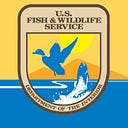Even in the Year of Plan B, That ‘B’ Still Stands for Banding Birds
By Mark Koneff, Chief of the Branch of Migratory Bird Surveys
It’s clear that 2020 has been unlike any year in recent history. The COVID-19 pandemic has presented unprecedented challenges. Earlier this spring the U.S. Fish and Wildlife Service canceled the Waterfowl Breeding Population and Habitat Survey, which is conducted using airplanes, helicopters and ground crews, and covers more than 2 million square miles of the principal breeding areas of many species of waterfowl in North America. This decision was not only made in the interest of concern for public and personnel safety but also due to the closure of the U.S.-Canadian border to most travel and Canadian restrictions eliminating surveys in northern areas with limited medical facilities. For those of us personally and professionally invested in the survey, cancellation for the first time since 1955 was a difficult decision. However, thanks to a long and robust history of collecting data and population estimates, Service and state quantitative analysts bridged the data gap and provided needed information for this year’s hunting regulations.
As it became apparent that Service crews would still not be able to enter Canada, we pivoted and worked with the Canadian Wildlife Service (CWS), Service staff and state agency colleagues to re-design the bird banding operations in both countries. The CWS operated in a restricted capacity in areas of the Canadian prairies, and the Service shifted its operation to stations across the four U.S. Flyways.
After extensive pandemic mitigation planning and preparations, we focused our domestic banding efforts on species in each Flyway of highest priority for harvest management. As much of our equipment and gear is stored in Canada off-season, it was a major lift for crew leaders and others to research banding locations, coordinate locally with Service and state personnel, re-equip and resupply, get necessary wildlife disease and COVID-19 sanitization supplies and protective equipment, obtain necessary state permits and extra vehicles to maintain distancing of personnel when in transit, and a host of other tasks. I’m always impressed by the dedication of these individuals, but even more so this year since we were able to build field stations across the nation in compliance with COVID-19 mitigation policies and practices including sanitizing equipment, wearing proper PPE and practicing social distancing.
The smaller, geographically redistributed banding effort was not ideal, but we’re pleased that, along with our partner programs and agencies, we will maintain this critically important annual effort. For banding data in particular, a gap in the time-series can have long-term ramifications to our ability to estimate key parameters such as survival rates and harvest rates.
· Waterfowl Banding Has Been Quite a Bit Different — Southeastern South Dakota Area
· The Year of the Blue-Winged Teal — North Central North Dakota Area
· Sunflower Mallards — The Dakotas and Montana Area
· From the Northwest Territories, Canada to the Lower 48 Prairies — Northeast Montana Area
